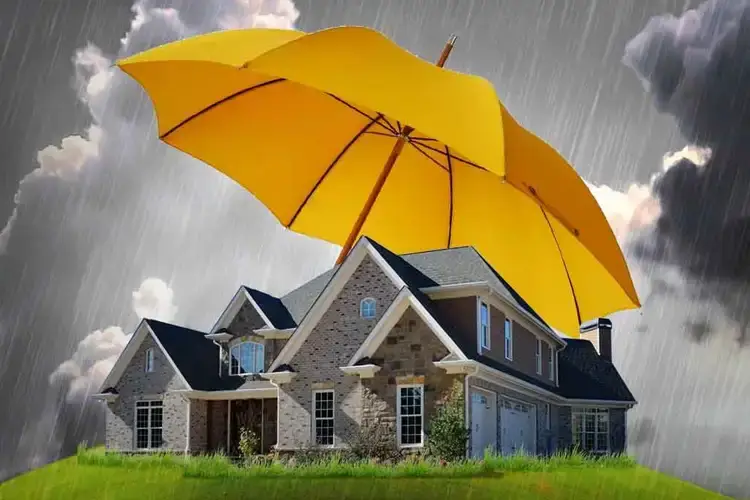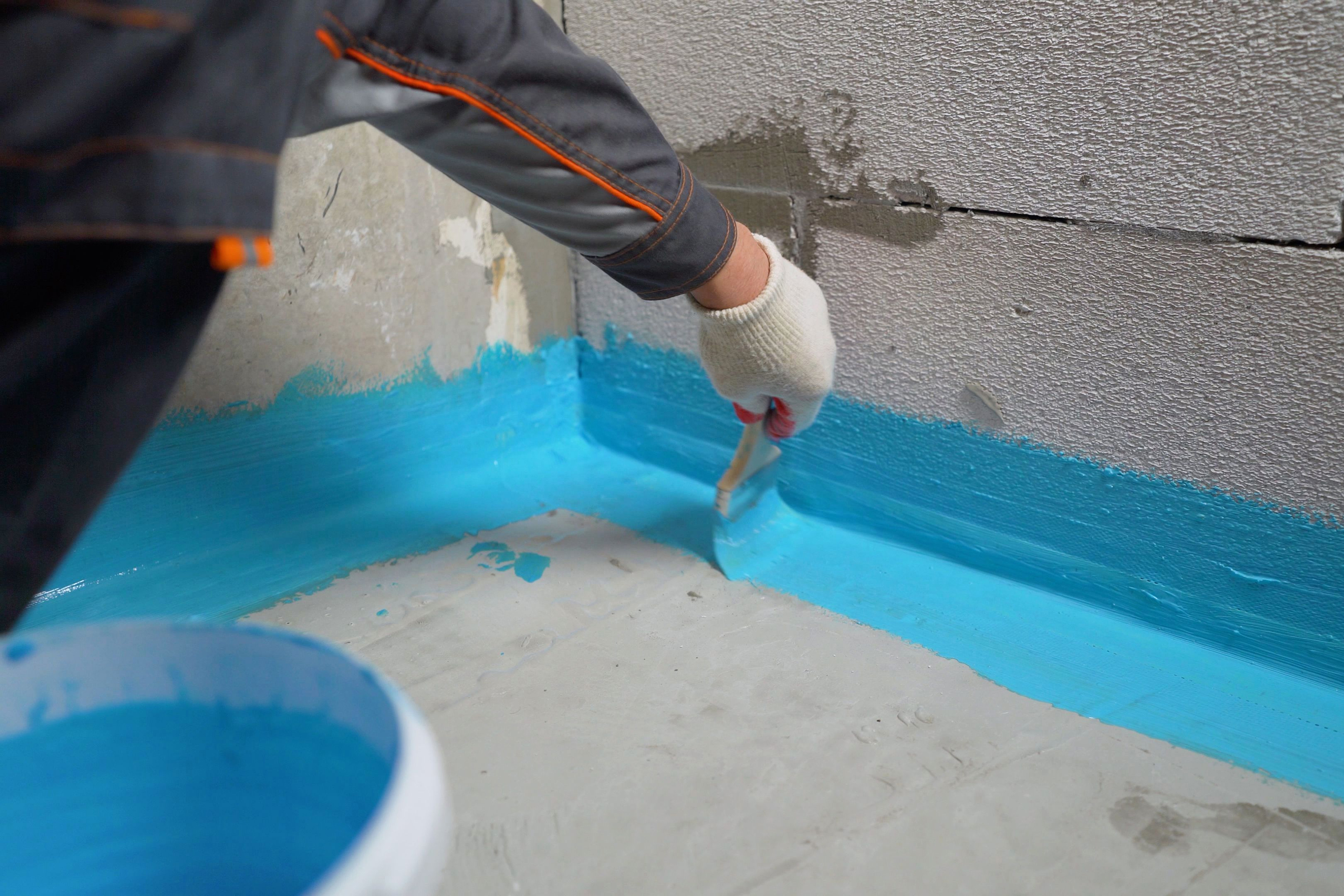Top 5 Reasons to Invest In Basement waterproofing Omaha for a Mold-Free Living Space
Just How Waterproofing Works: An In-depth Check Out Techniques and Technologies
Waterproofing is essential for shielding frameworks from moisture-related damage. It entails numerous techniques and technologies that develop barriers against water breach. Standard methods, such as compressed clay, exist together with modern technologies like liquid-applied membranes. Recognizing the subtleties of these approaches is essential for efficient application. The efficiency of any waterproofing option hinges not only on the strategies utilized but additionally on ongoing upkeep and evaluation. What are the vital elements that affect long-lasting performance?
Comprehending the Basics of Waterproofing
Waterproofing is a crucial process that safeguards structures from water invasion, which can bring about significant damage gradually. This method involves the application of different products and techniques developed to produce an obstacle versus moisture. The primary goal is to stop water from penetrating surfaces, which can trigger degeneration, mold and mildew development, and structural instability.Various elements influence the option of waterproofing approach, consisting of the kind of structure, its location, and environmental conditions. Comprehending the physics of water motion and the residential properties of various products is vital in picking a reliable waterproofing solution.Effective waterproofing not only safeguards buildings but also boosts their longevity and honesty. Normally, it is incorporated right into the style phase of building to ensure complete security. As recognition of water-related problems expands, the relevance of understanding waterproofing fundamentals becomes significantly clear to designers, building contractors, and building proprietors alike.
Traditional Waterproofing Methods
Conventional waterproofing methods have actually been utilized for centuries, depending on tried and true techniques and products to guard frameworks from water damage. Among the earliest techniques includes making use of clay, which, when compressed, produces a natural obstacle versus wetness. Furthermore, bitumen, a sticky, black product originated from petroleum, has been used for its waterproof residential properties, frequently used to roof coverings and foundations.Another method involves the application of lime-based plasters, which give a breathable layer that enables moisture to run away while stopping water ingress. Thatch roof covering, a conventional approach still seen in some cultures, offers exceptional waterproofing due to its snugly packed straw layers.Moreover, making use of stone and block has been famous, as these materials are naturally resistant to water when appropriately installed. Generally, traditional waterproofing techniques emphasize the value of selecting suitable products and construction methods to boost toughness against water invasion.
Modern Waterproofing Technologies
Innovations in modern waterproofing innovations have actually transformed the method frameworks are safeguarded from water damages. Innovative methods such as liquid-applied membrane layers and innovative sealants have boosted the performance and flexibility of waterproofing options. These modern technologies permit seamless application, minimizing the threat of leaks and guaranteeing complete insurance coverage over complex surfaces.Moreover, the integration of wise modern technologies, such as dampness sensing units and automated monitoring systems, allows real-time assessment of waterproofing performance. This positive method promotes timely maintenance and decreases long-lasting repair costs.Additionally, advancements in spray-applied finishes provide quick application and outstanding attachment, adapting to different substrates while providing robust protection. Techniques like polymer-modified systems further boost versatility and durability, making them ideal for diverse environments. Generally, modern-day waterproofing technologies not just alleviate water intrusion however likewise contribute to the longevity and sustainability of structures, noting a substantial change in the market.
Materials Made Use Of in Waterproofing
The performance of waterproofing options heavily relies on the products used in their application. Various products are utilized to create obstacles versus water ingress, each with one-of-a-kind residential or commercial properties suited for various atmospheres. Commonly made use of materials consist of membranes, coatings, and sealants.Liquid-applied membrane layers, typically made from polyurethane or acrylic, form a smooth barrier that adjusts to complex surface areas. Sheet membranes, commonly built from rubber or thermoplastic, deal resilience and are excellent for larger locations. Furthermore, cementitious waterproofing products, composed of cementitious substances, offer excellent bond and flexibility.Sealants made from silicone or polyurethane are important for joints and joints, making sure comprehensive defense. Furthermore, innovative materials, such as geo-composite membrane layers, combine several functions, improving efficiency. Generally, the blog here option of waterproofing materials is crucial in attaining lasting and efficient water resistance, customized to particular job needs and environmental problems.
Usual Applications of Waterproofing
Waterproofing plays a vital duty in numerous sectors, making certain the long life and honesty of structures. Typical applications consist of household solutions that safeguard homes, industrial facilities that safeguards organizations, and commercial settings that require durable defense versus dampness. Understanding these applications highlights the importance of waterproofing in preserving both security and performance across different atmospheres.
Residential Waterproofing Solutions
Lots of house owners encounter obstacles with wetness invasion, making efficient property waterproofing options crucial. Different techniques exist to address this problem, including exterior and interior waterproofing systems. Inside remedies often involve the application of sealers and layers to cellar wall surfaces, which assist avoid water seepage. Exterior approaches commonly consist of the setup of drain systems and water resistant membranes that divert water far from the foundation.Additionally, house owners may consider sump pumps to remove water buildup and dehumidifiers to manage find this humidity degrees. Appropriate grading and the use of gutters additionally play a crucial role in managing water circulation around the home. By carrying out these techniques, homeowners can greatly minimize the risk of water damages and mold development, making sure a dry and secure living atmosphere.

Industrial Facilities Protection
Effective waterproofing services play an important function in the defense of commercial infrastructure. Landscape drainage Omaha. These methods are crucial for guarding buildings, auto parking frameworks, and bridges from water damages, which can jeopardize structural integrity and lead to costly fixings. Usual applications consist of the setup of membranes, coverings, and sealants that develop obstacles against moisture seepage. Locations such as basements, roofs, and outside wall surfaces are typically prioritized to guarantee long life and toughness. In addition, waterproofing systems can improve energy performance by stopping water-related problems that may cause mold and mildew development and wear and tear. By executing robust waterproofing procedures, homeowner can protect their financial investments and preserve functional effectiveness, inevitably adding to the overall sustainability of business centers
Industrial Applications Introduction
While various markets encounter unique challenges, the need for trustworthy waterproofing solutions stays a consistent in industrial applications. Industries such as production, building and construction, and energy commonly run into environments where moisture direct exposure can threaten architectural check my source honesty and functional performance. In manufacturing facilities, waterproofing is crucial for safeguarding machinery and materials from water damage. In building, it safeguards foundations and basements against groundwater infiltration. The energy sector relies on waterproofing for the security of devices in hydroelectric plants and overseas frameworks. In addition, food handling sectors utilize waterproofing to ensure health and compliance with security criteria. Overall, effective waterproofing solutions are necessary for boosting longevity, safety, and productivity throughout various industrial settings.
Maintenance and Long Life of Waterproofing Solutions
Waterproofing options are designed to supply long-lasting security against dampness intrusion, regular maintenance is vital to guarantee their effectiveness and longevity. Routine inspections play a considerable duty in identifying potential issues such as fractures, peeling, or signs of water damages. Resolving these issues immediately can prevent further damage and costly repairs.Additionally, cleaning the surface of waterproofed areas helps remove dirt and particles that can jeopardize the honesty of the waterproofing barrier. It's likewise recommended to reapply protective coatings or sealants as recommended by manufacturers to maintain suitable performance. Ecological aspects, such as UV direct exposure and extreme weather problems, can influence the lifespan of waterproofing materials, making normal evaluation vital
Often Asked Inquiries
Can Waterproofing Be Applied in Cold Weather?
The inquiry of using waterproofing in chilly climate elevates concerns about adhesion and curing. Lots of items may not perform at their best in reduced temperature levels, requiring careful option and consideration of specific guidelines for efficient application.
Exactly How Lengthy Does Waterproofing Commonly Last?
The duration of waterproofing effectiveness differs based on products and ecological elements. Normally, it can last from five to ten years, yet routine upkeep and inspections are crucial to ensure peak performance and longevity.
Is DIY Waterproofing Effective and Safe?
The effectiveness and security of DIY waterproofing depend upon numerous elements, including worldly quality and application technique. While some individuals attain satisfying results, others may run into problems that endanger long-lasting defense and structural honesty.
What Are the Indications of Failing Waterproofing?
Signs of falling short waterproofing include noticeable water discolorations, peeling paint, mold and mildew development, mildewy odors, and moisture in walls or ceilings - French drain installation Omaha. These indications recommend jeopardized barriers, demanding timely assessment and potential removal to avoid further damages
How Do I Select the Right Waterproofing Professional?
